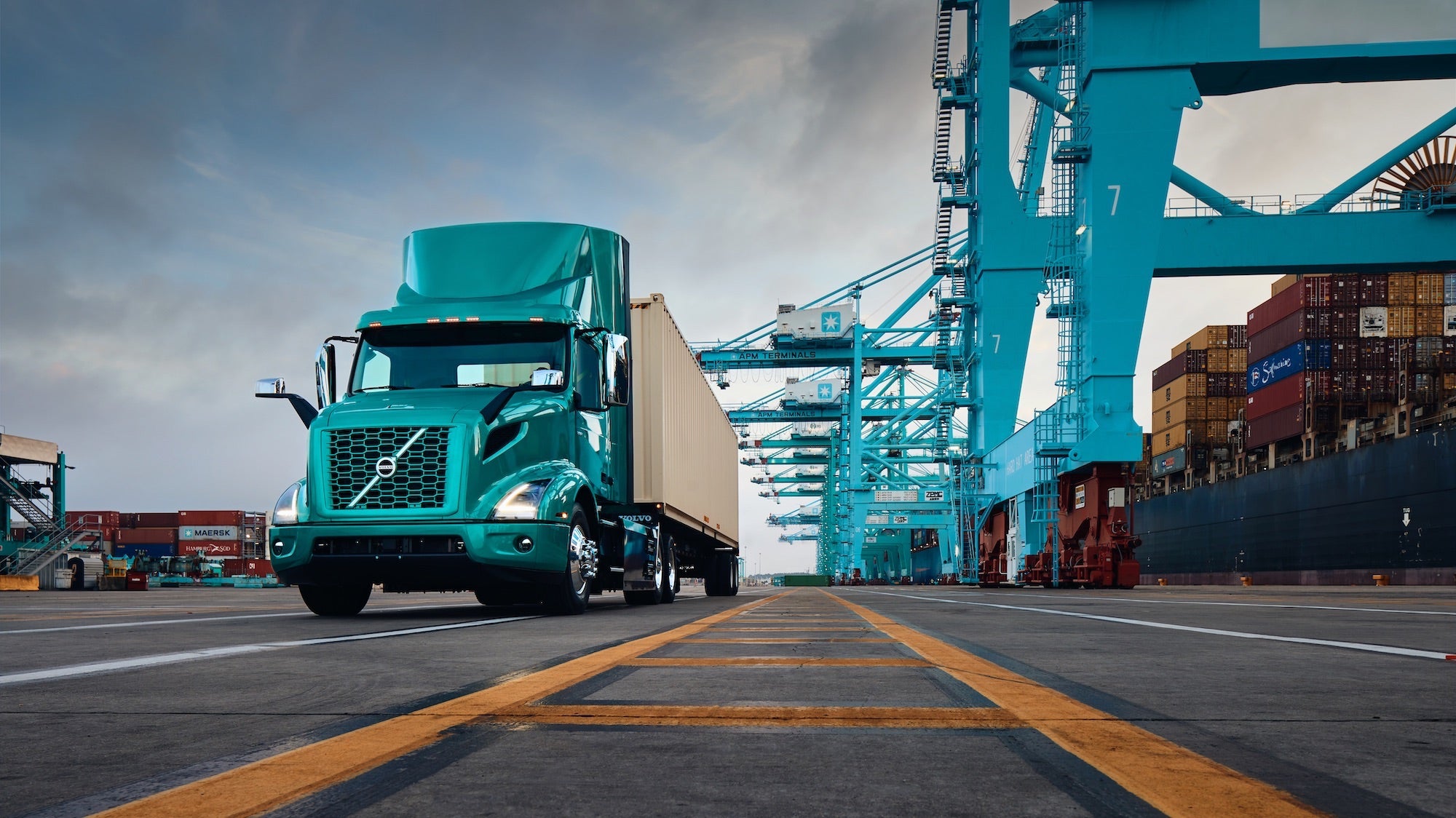Technology
Is the future of freight transport electric? We drove the VNR Electric to find out.

Freight transport is essential to keep the country running smoothly. From the tanker truck that pulls into the gas station to refill the fuel storage tanks while another truck arrives to replenish the coolers with your favorite drinks, to the moving truck that delivers your belongings to your new home and the large truck that delivers a fresh supply. delivery of merchandise–72 percent of the goods we consume are delivered by truck.
However, there is the question of how many millions of kilometers trucks travel across the country each year diesel fuel particles that contribute to overall air pollution. According to the Clean Air Task Force, this is the worst diesel pollution in the US is located in Los Angeles along Interstate 5 at 0.726 micrograms per cubic meter. Logistics companies are looking for greener solutions to mitigate their contribution, with hydrogen and battery-electric energy coming on the road in recent years.
One company, Golden State Foods of Irvine, California, has found a solution for its Quality Custom Distribution (QCD) division with Volvo Trucks North America’s first-ever Class 8 EV, the VNR Electric.
“You have to look at a lot of factors when you jump in [fleet electrification]but first and foremost [are] our sustainability goals,” said Shane Blanchette, QCD Group Vice President of Operations. “Our goal is net zero emissions by 2050 […] the sooner you start, the better in terms of learning and making the transition […] Volvo has brought us this opportunity; we are a good use case, given our business model. We tried the first [VNR Electric], really liked it. It made sense to continue on this path to learn more and grow this side of our fleet.”
QCD adopted the Volvo VNR Electric in April 2021 and ordered 14 day cab units with financial support through a grant awarded to Volvo Financial Services from the California-based Mobile Source Air Pollution Reduction Review Board. This was followed in 2022 with the addition of another 30 VNR Electrics, joining the more than 700 QCD trucks for last mile deliveries to restaurant locations in Southern California.
“The drivers really like it [the VNR Electric],” said Blanchette. “We weren’t really sure how this would affect them, but they like a smooth ride. They are definitely quieter […] In terms of maintenance, this was in line with expectations: we expected it to be a lot lower. The only piece we see is on the drive tires. Considering the weight of the vehicle, they wear out a little faster.”
The future of trucking begins in Virginia’s New River Valley
Southwest Virginia is home to Volvo Trucks North America. Located in Dublin, Virginia, the 1.6 million sq. ft. factory builds every Volvo truck sold in North America, including the VNR Electric. PopSci was the first to visit the facility since it closed to the public during the pandemic in 2020. During this visit, we got a glimpse of the potential future of trucking with the company’s first Class 8 EV.
“Sustainability is at the forefront of every decision Volvo Trucks makes,” said Kyle Zimmerman, Public Relations Manager at Volvo Trucks. “Volvo Trucks sees Battery Electric as a critical path to decarbonizing transportation […] We remain committed to the three-pillar strategy of BEV, FCEV and ICE, all working together to decarbonize transportation across business cycles and applications.”
Volvo Trucks North America announced the VNR Electric in December 2018. This debuted alongside the Volvo LIGHTS Project, a “public-private partnership to understand what it will take to commercialize Class 8 BEVs,” Zimmerman said. The first VNR Electric rolled out of Dublin in 2020, with more than 270 examples in both box configurations (a bed mounted directly to the frame) and fifth wheel configurations (a hub on the frame where a trailer is connected to the truck) available locally and regionally. transportation so far. And there’s more coming from the New River Valley, including hydrogen-powered Class 8 engines.
“In addition to Battery Electric,” Zimmerman said, “we see that Fuel Cell (with hydrogen) is another path that will be more suitable for long-haul applications, heavy-duty transportation and in areas where electric infrastructure will not be available. for some time. We also see a longer future for the combustion engine, which runs on fossil-free and renewable fuels such as HVO, renewable diesel and hydrogen.”
There’s a first time for everything
The highlight of my visit to the Volvo Trucks North America plant in western Virginia was driving a VNR Electric around the plant’s test track. The circuit was originally a mile long, but has recently been expanded to five miles to give customers a better idea of what their chosen truck model can do in a safe environment on public roads.

The only times I ever drove a truck were over The “American Truck Simulator” from SCS Software which has the current Volvo VNL in its range, although the Czech Republic-based company plans to introduce both electric trailers and trucks in “ATS” and “Euro Truck Simulator 2” over time.
How does a Volvo VNR Electric drive? My tester was an older VNR electric box truck with 20,000 pounds of rocks loaded into the box behind the day cab to give the driver a better idea of what this machine would be like driving on public roads with a full load. Starting the truck takes a few more steps than just turning the key, but what you won’t hear is the usual clatter and roar of a diesel engine. Instead, the only noise coming from the truck was that of the parking air brake at the beginning and end of my run.
The VNR Electric drove like a champion over the different parts of the test track and rolled smoothly and comfortably over the track. The regenerative braking sometimes actually brought the EV big rig to a standstill. What I wanted to know was what would happen if I just put the accelerator to the floor. Finally, EVs are well known because of their instant torque, especially when the (not so) loud pedal is pressed, sending all the electric power into everyone’s tummy.
This truck, on the other hand…didn’t. With the pedal slammed to the floor, the VNR Electric rolled gently along the straightest part of the test track, eventually picking up speed quickly, like other EVs. As Ken explained, the VNR Electric is more of a tool than an everyday EV, a vehicle built to deliver goods rather than drive. On the other hand, more than a few drivers – like those at Golden State Foods – are excited to have this Class 8 EV in the fleet because of all it can offer them: a quiet, smooth ride from the distribution center to the grocery store.
The future has yet to be built
If there’s one thing keeping more Class 8 truck makers from joining Volvo Trucks North America’s electrification, especially when it comes to long-haul trucking, it’s a two-fold problem: infrastructure and batteries.
“Batteries are heavy, so there is a limited number of batteries that can be put in a truck and still make it commercially viable from a payload perspective,” Zimmerman said. “This range is likely to be expanded with future developments in battery technology. Moreover, there are still many hurdles to overcome with charging infrastructure. The grid faces the challenge of supplying electricity in the quantities required for fleets deploying Class 8 BEVs, and that also plays a role in keeping Class 8 BEV solutions suitable at this time.”

Still, there’s plenty of excitement about this particular Swedish-American electric major platform, especially for QCD and other last mile operators.
“For the Southern California market, we have the opportunity to convert the entire fleet to electric,” Blanchette said. “A major cost saving is on the fuel side. Depending on what you pay for electricity versus diesel fuel in a particular market, you will usually realize savings in that area. That’s what we’ve seen so far and it has eased our expectations.”













